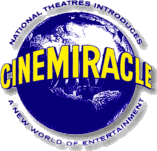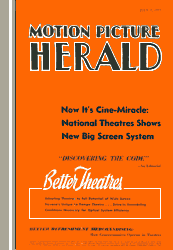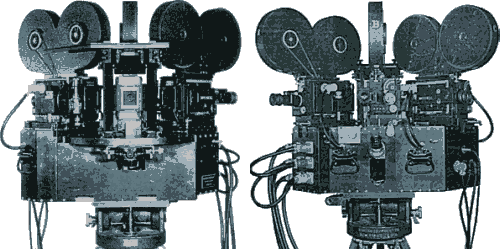Cinemiracle Internal Documents. See 2nd Page.
High Res Production Stills From Windjammer See 2nd Page.
July 2, 1955 Announcement of Cinemiracle
Click To Read ArticleIn the early 1950's, the Smith-Dietrich Corporation experimented with a wide screen system using two 35mm cameras. One camera photographed its image in the conventional way but the second camera, placed beside the first, photographed an adjoining picture reflected in a mirror. Using standard 35mm film with an aspect ratio of 1.33:1, the two images were then projected side by side to produce one "seamless" 2.66:1 wide screen picture. The company claimed that the use of a mirror allowed the two cameras to photograph from the same optical center, thus avoiding the parallax associated with multiple camera films.
National Theatres acquired exclusive rights to the Smith-Dietrich patents and the next step that the company took was the construction of a three camera system that took a picture virtually identical to Cinerama with the exception that the right and left cameras photographed portions of the picture on their own side by shooting into specially constructed mirrors. While Cinerama essentially used a single camera with three film movements, the Cinemiracle camera was constructed from three modified Mitchell cameras that were mechanically interlocked.
The Cinemiracle camera seen above is much bulkier than its Cinerama cousin. Like Cinerama, Cinemiracle's three 27mm lenses were manufactured by Eastman Kodak but were placed in focusing mounts that were electro-magnetically controlled. Additionally, the lenses shifted their optical centers with changes in focus, eliminating double images that would sometimes appear in Cinerama films. The two mirrors had a beveled leading edge that produced a vignette on the film edge, eliminating the need for the projector "gigolos" used in Cinerama projection equipment. The vignetting of the film was further enhanced in the manufacture of the film prints. Located just below the camera platform in alignment with the center camera is an optical viewfinder that covers the entire 146 degree field of vision.
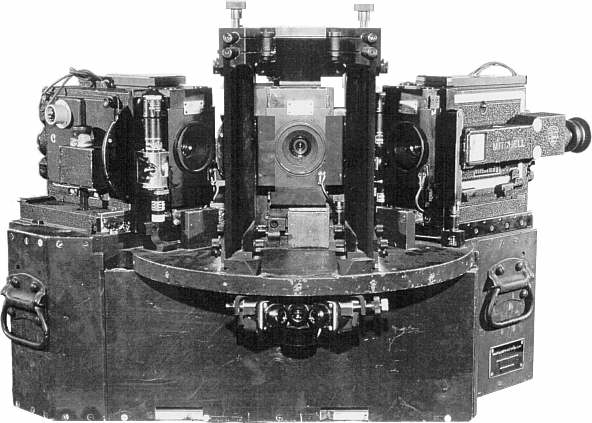
The Cinemiracle camera(s), sans film magazines, shown in detail in this official Cinemiracle Corp. glamour shot. Below, a close up of the three-eyed viewfinder that was mounted beneath the cameras. Note the eyepiece swivels to allow magnified viewing of each panel.
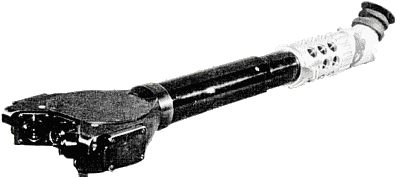
Detail photos courtesy of Dave Strohmaier - The Cinerama Adventure
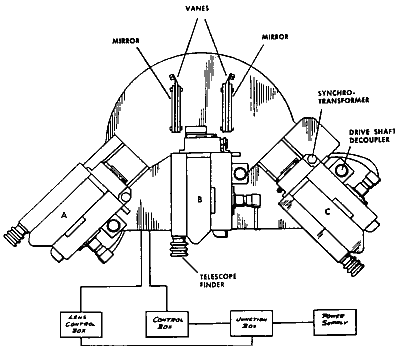
The diagram of the Cinemiracle camera shows the two outside cameras in their "pulled back"positions where they could be racked over or otherwise serviced, film changed etc. For shooting, they would be moved forward into the same position as the center camera.


